Luxury Cambodia Travel
Cambodia is a criminally overlooked luxury travel destination. The staggering Angkor temples are world famous, and with good reason, but what many may not realise is that there is a whole world of adventure waiting beyond. Cambodia is arguably Asia’s most exciting destination – just waiting to be explored.
Your tour is likely to start in either Siem Reap or Phnom Penh. Whether it’s indulging your inner Lara Croft in the former, or diving into street food and nightlife in the latter, these are cities are a travellers’ dream with friendly locals, walkable city centres, and a plethora of excellent accommodation. As well the principal sightseeing both offer eye-opening cultural immersion activities: walking tours, cooking classes, art tours, or village exploration out in the nearby countryside.
The adventures pick up out in wider Cambodia. Battambang is an easy addition to most tours and offers gorgeous colonial architecture in its centre and enticing rural scenery just outside. A jaunt up to Kratie provides Mekong river adventures searching for rare Irrawaddy dolphins and idyllic uninhabited islets. Down south you’ll find steamy jungles, staggering beaches, and mouth-watering seafood.
Beyond all of that allure what many visitors find most captivating about Cambodia is the spirit and resilience of its people. Despite a very difficult modern history, the Cambodian people retain an infectious optimism, welcoming travellers in with their smiles as some of the friendliest and most hospitable people in Asia.
Tours of Cambodia are full of surprises. The ‘Kingdom of Wonder’ begs to be explored in depth: from the bright lights of Phnom Penh to the dense jungles of Tatai, this is a destination that truly rewards adventurous and curious travellers.
The bulk of international visitors to Cambodia will pass through Siem Reap only, staying for a day or two of temple tours, then move out to neighbouring destinations. To do so is to miss out Asia’s great adventure destination: wherever you travel in Cambodia you’ll find excitement and intrigue, and great accommodation to match. You’ll also discover the wonderful Cambodian people: delighting in their rich culture, warm hospitality, and mouth-watering cuisine.
If you are planning a complete tour of Indochina then Cambodia will combine seamlessly with neighbouring Thailand, Laos, and Vietnam. Transport links between the four countries are excellent. A big-hitting tour of the region – taking in any or all of Hanoi, Halong Bay, Hoi An, Luang Prabang, Bangkok, Chiang Mai, Singapore, Phuket – is painless to arrange and travel through, offering the tantalising opportunity to take in all of Southeast Asia’s greatest hits in one action-packed itinerary.
Our specialists have put together a selection of sample tours, picking out the most efficient routes and highlighting some of our favourite hotels and experiences. This is the just the tip of the iceberg: whatever style of traveller you are, however long you’re planning to travel for, and whoever you’re planning to travelling with, we’ll come up with an epic Cambodia tour to suit.
Siem Reap is Cambodia’s leading destination and sees the vast majority of its international arrivals. Angkor Wat is the big draw – and with good reason; the ‘mother of all temples’ is a genuinely breath-taking experience – but there is so, so much more to the city than just this one temple. The wider Angkor Archaeological Park would take days to explore properly, with many of its magnificent ruins seeing little to no visitors throughout the average day. But there’s much more besides temples: a three-day visit to Siem Reap can take in zip-lining, hiking, contemporary art tours, food tours, circus shows, wildlife adventures…and that’s without indulging in the city centre’s excellent dining and shopping.
Should you plan a longer trip to Cambodia – and we’d always encourage you to do so – there’s much to see and many adventures to be had. Buzzing nightlife in Phnom Penh, alluring rural scenery around Battambang, laidback coastal walks in Kep and Kampot, wild nature tours in Tatai and Kirirom, rugged wildlife encounters in Ratanakiri and Mondulkiri…the question is not what to see, but what to leave out!
Cambodia also offers dazzling tropical beaches, easily competing with anything on offer in Vietnam or Thailand. A handful of light-touch luxury developments on Cambodia’s pristine off-shore islands have seen completion in recent years, and in doing so have elevated Cambodia to Asia’s most complete and compact luxury tourism destination.
Our guide to Cambodia’s principal destinations is below. You’ll find there’s a lot to see and a great deal of variety on offer! Please speak to our specialists if you’d like more information on any of these locations.
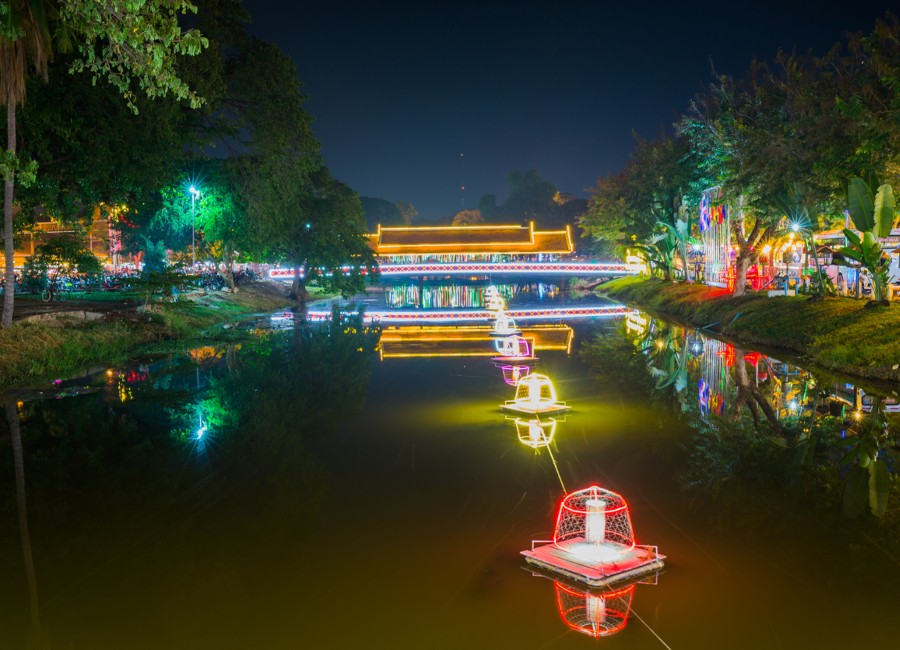
Siem Reap is often described as the perfect destination for first-time visitors to Asia. The Angkor temples are the main draw – and with good reason – but you’ll also find great shopping in the central markets, turning into a buzzing nightlife and dining scene after dark. This contemporary, cosmopolitan city – the second largest in Cambodia – also offers art tours, food and drink activities, outdoor adventure, epic day trips, and a wide array and ever-growing array of outstanding high-end accommodation.

Phnom Penh is Cambodia’s bouncing capital city. Vibrant, lively, welcoming, and a photographer’s dream – if you enjoy a busy tropical city then this is definitely the place for you. Sitting at the confluence of the Bassac, Tonle and mighty Mekong rivers, Phnom Penh has many stories to tell: its Angkorian, French, and Khmer influences are visible in its eclectic architecture and historical sites. Following years of bubbling under the radar after the collapse of the Khmer regime, Phnom Penh is currently experiencing huge growth and investment, and now firmly competes with Ho Chi Minh City and Bangkok as a base for both work and play.
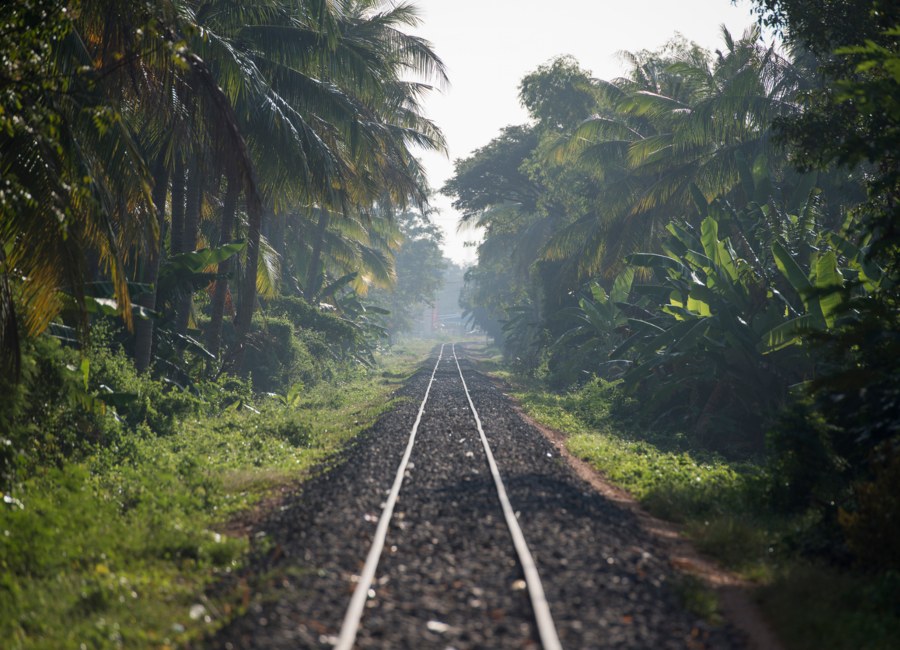
Around 4 hours’ drive west of Phnom Penh, Battambang is Cambodia’s third largest city, and you’ll find it a more compact and laidback sister to Phnom Penh and Siem Reap. In the centre you’ll find a mix of semi-restored colonial shophouses, long tree-lined avenues, and of course the usual moto-fuelled mess of streets around its sprawling central market. A short drive outside of the city finds you immediately in rich rural scenery: Battambang this is a fine base for rural mountain-biking, hikes, and nature tours, and also makes the start point of an epic day-long boat ride across Tonle Sap to Siem Reap.
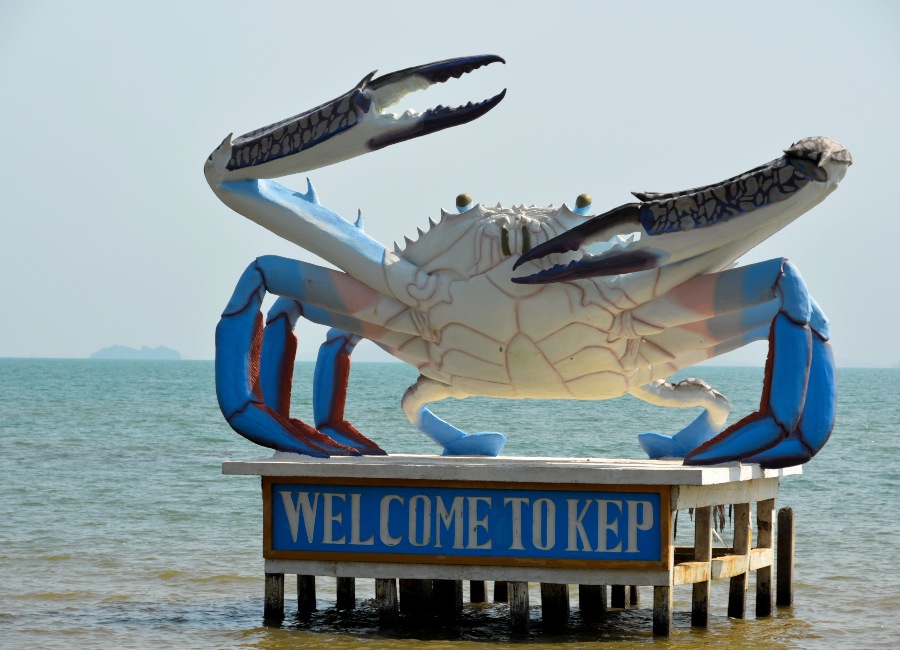
In the heyday of the French Kep was a cool coastal escape, the perfect setting for weekend jaunts down from Phnom Penh. The town has grown since, centred around its busy crab fishing industry, but retains a laidback seafront atmosphere and is a fine place to kick back for a day or two. If you’re up for exploring the town is backed by a beautiful national park which has a couple of excellent trails and several sunset viewing points; the intriguing colonial market town Kampot is also just a short drive away. Kep houses several old colonial mansions, some of which have been converted into attractive boutique hotels.
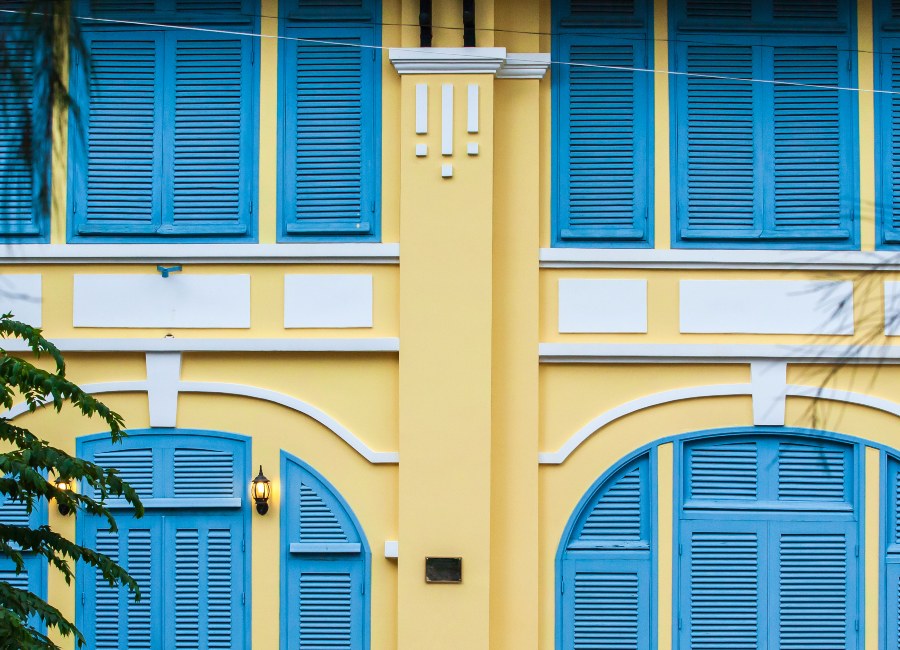
Kampot, a short 30-minute drive from Kep, is a charming riverside port known for its quaint shopping streets lined with photogenic shophouses and its surrounding pepper farms. Kampot pepper enjoys WTO Protected Geographical Indicator status, putting it on a par with champagne or Scotch beef; a visit to a pepper farm, including a tour and an excellent lunch, can be easily arranged locally. We also recommend a trip up to Bokor National Park, a 1000m summit above Kampot. Formerly a French hill station, Bokor was completely abandoned post-independence, and now has a somewhat eerie quality with several derelict hotels and mansions.
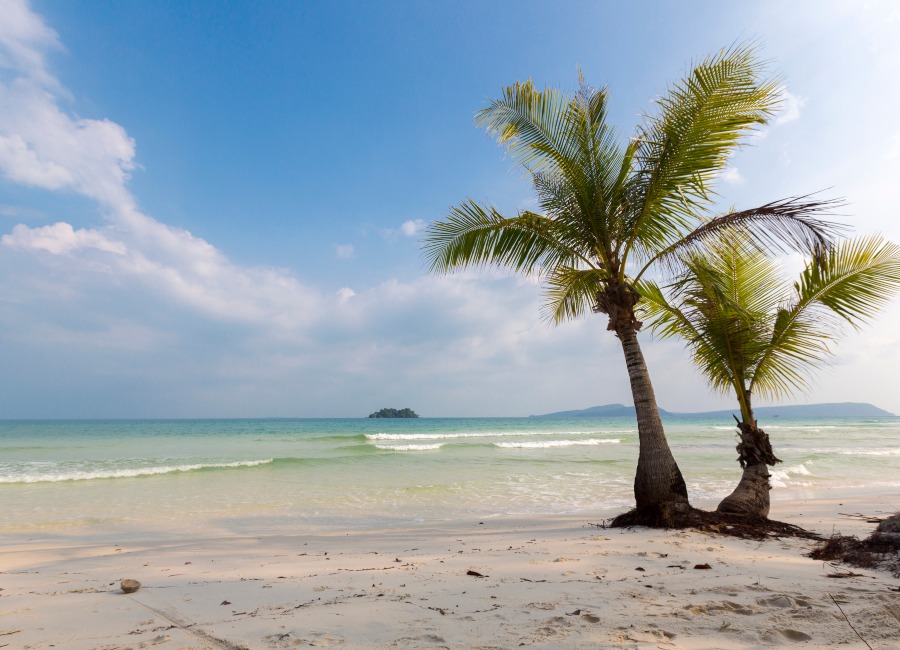
Koh Rong is Cambodia’s paradise island. It is picture postcard stuff: pristine white beaches, swaying palm trees, and azure waters. Not too long ago the island was barely developed, home to a couple of small villages making a subsistence on fishing and farming, but in recent years has seen a mini boom in tourism development. The island is large enough that upmarket properties feel suitably isolated: enjoy the stunning beach, let the resort indulge you, or choose from an array of enticing activities, such as snorkelling and diving, kayaking, island-hopping tours, or treks and mountain bike tours of the island’s jungle interior.
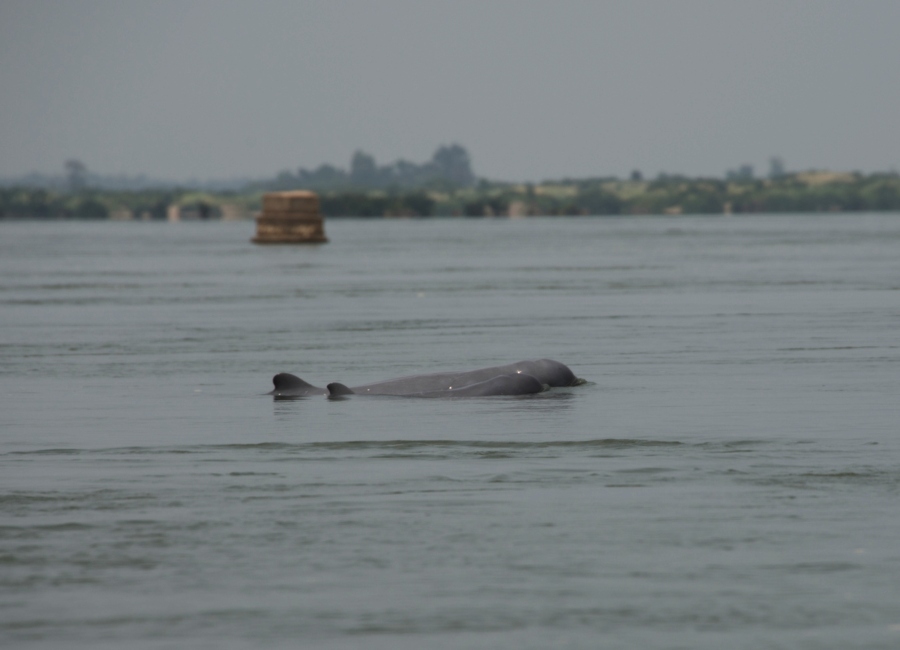
Located around 4 hours’ drive north of Phnom Penh, set on the banks of the Mekong river, Kratie is eastern Cambodia’s largest city and a gateway to the red earth and rugged nature of Ratankiri and Mondulkiri provinces. The riverside setting is its key selling point: the city centre is suitably mellow and there are numerous cafes and restaurants from which to enjoy gorgeous Mekong sunsets. From Kratie travellers can arrange river tours out to the see the elusive Irrawaddy river dolphins, or press on further north for nature adventures around Sen Monorom, or tribal encounters around Ban Lung.
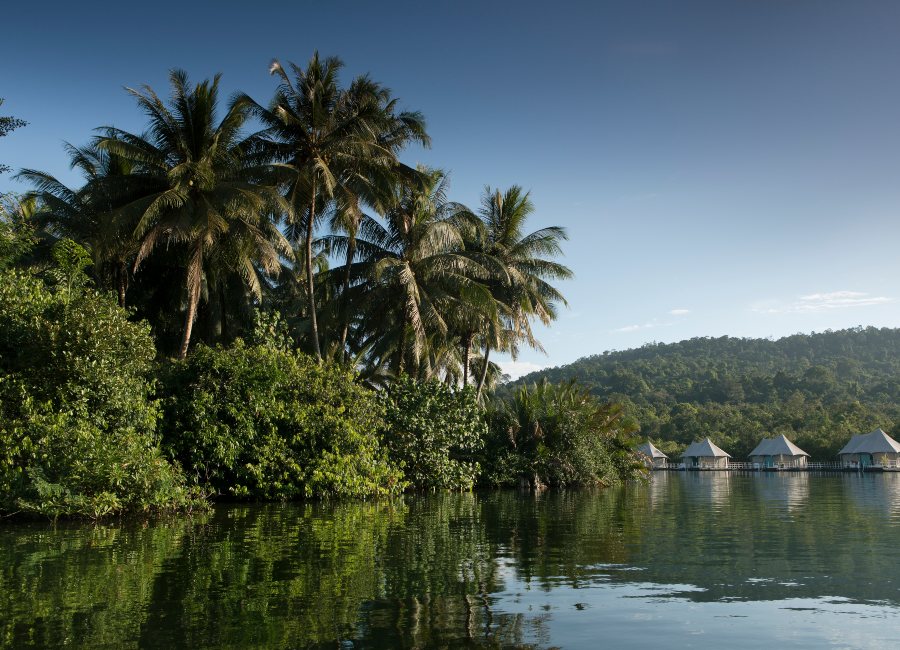
Cambodia’s southern frontier encompasses tropical mangroves, dense jungle, and the rugged Cardamom mountains. This area has almost no local population and is a base for exploring the wild, untamed side of the country. A handful of excellent lodges – the Four Rivers Floating Camp in Tatai, Cardamom Tented Camp, and Jurassic Park-esque Shinta Mani Wild – offer comfortable accommodation from which you can partake in exhilarating nature tours. This part of the country is a long 7-8 hour drive from Phnom Penh, but enticingly Thai islands Koh Kut and Koh Chang are just 3-4 hours’ away by road and boat.
Cambodia offers an impressive range of superior and upmarket accommodation. It’s two principal cities Siem Reap and Phnom Penh are long-established destinations bursting at the seams with exceptional hotels. There are numerous luxury options: whether your tastes are for contemporary or heritage accommodation, urban oasis or rural escape, there is a hotel to suit.
Cambodia has an impressive abundance of independent boutique accommodation. Both key cities have dozens of attractive such properties, but you’ll also find attractive and well-run small hotels out in wider Cambodia: the Knai Bang Chatt in Kep, Rajabori Villas in Kratie, and Bambu Hotel in Battambang are all particular favourites here at UTC.
When it comes to beach accommodation Cambodia certainly doesn’t disappoint either. Out on the islands of the Koh Rong archipelago there is an impressive selection of exclusive luxury retreats. Song Saa private island is a long-established favourite here, but recent openings from Six Senses, Royal Sands, and Alila Villas are all providing stiff competition.
Best of all, Cambodia’s accommodation is excellent value. 4 and 5 star choices here are terrifically priced in comparison to other global destinations, so make sure to ask our specialists for upgrade options…and consider treating yourself!
Cambodia is a real traveller’s destination. It rewards the adventurous and the curious, with much to explore both on- and off-the-beaten-path. Should you extend your stay beyond Siem Reap and treat the country as a whole – which we heartily recommend – you’ll find enticing scenery and exhilarating activity at every turn.
Cambodia’s core sightseeing is mightily impressive. It’s hard to describe the sheer breath-taking majesty of the Angkor temples, both in its most famous ruins – Angkor Wat, Angkor Thom, Ta Prohm – but even more so in the lesser visited minor temples, which you’ll often find yourself exploring in splendid isolation. Siem Reap, and also capital Phnom Penh, also boast excellent galleries and museums, plus a wealth of historical sites where you’ll learn about Cambodia’s many influences down the years: Indian, Angkorian, Khmer, French, and American to name a few.
Longer tours of Cambodia which explore the country in depth will pay you back in spades. The steamy jungles of southern Cambodia are ripe for exhilarating nature tours; the scorched red earth of the east offers forest treks and tribal encounters; coastal destinations serve up snorkelling, diving, and delectable fresh seafood.
Our specialists are a wealth of knowledge and always keen to offer the more unusual and intriguing option: ask us about the motogirls tours in Phnom Penh, kayaking in Tatai, or birdwatching on Lake Tonle Sap and prepare to see your itinerary jump off the page!
We offer a broad range of tours and activities across Cambodia, catering to all tastes and interests. We’ve picked our just a few of our favourites below. This is just the tip of the iceberg though: let us know what excites you most about Cambodia, and we’ll map out the perfect itinerary.
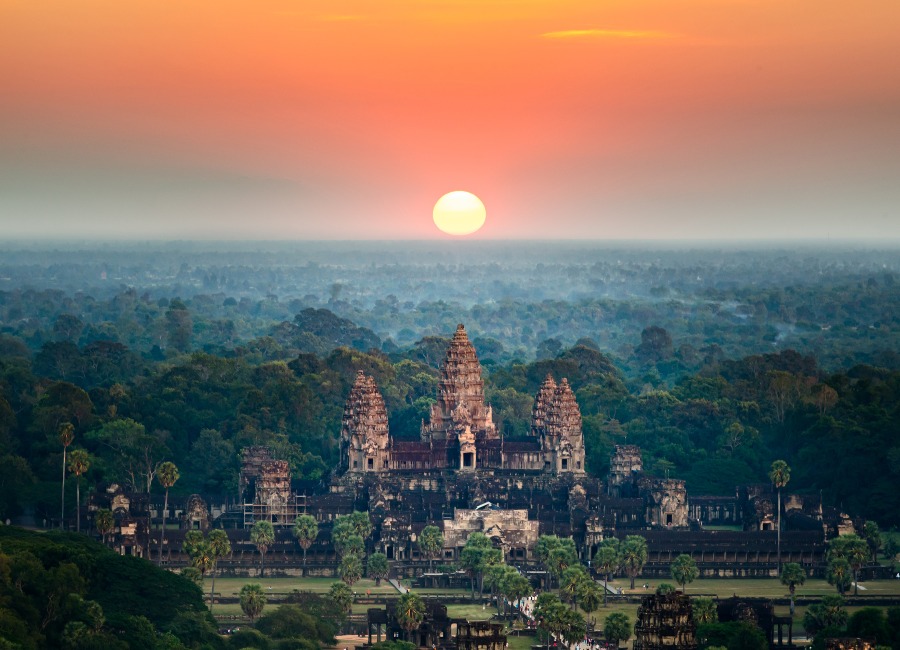
The best time to take in the ‘mother of all temples’ is at sunrise. Positioning yourself in front of the temple entrance, across the reflective bathing pool, observe an ever-changing backdrop of pinks, oranges, and reds play out behind the temple spires. Angkor Wat can be busy at any time of day and is especially popular with photographers at this time of day, but our expert guides will ensure you achieve avoid the crowds and achieve the best angles for your iconic sunrise shot.
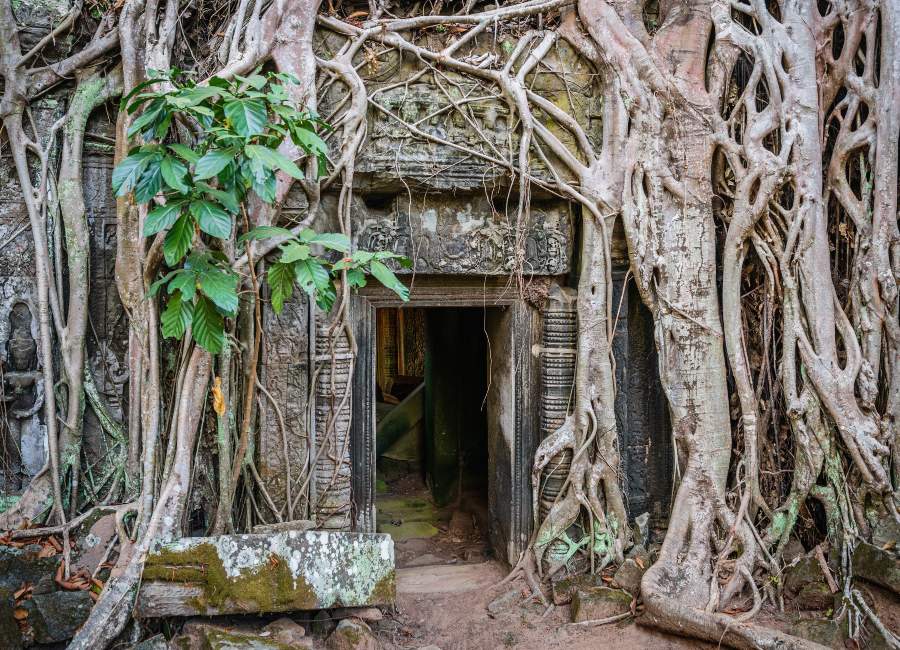
There’s more to Siem Reap than Angkor Wat. The Angkor Archaeological Park alone covers around 160 hectares, encompassing prominent sites Angkor Thom, the Bayon, and the legendary jungle temple Ta Prohm. There are many lesser temples to explore however, most of which see little to no visitors. A combination of dramatic pyramid Ta Keo, forested Ta Nei, and expansive Srah Srang reservoir are a particular favourite – especially first thing in the morning. Ask us about visits further afield too: Koh Ker, Beng Mealea, Preah Vihear, Phnom Kulen are all worthy day trips out of Siem Reap to discover dramatic, secluded, and rarely-visited ruins.
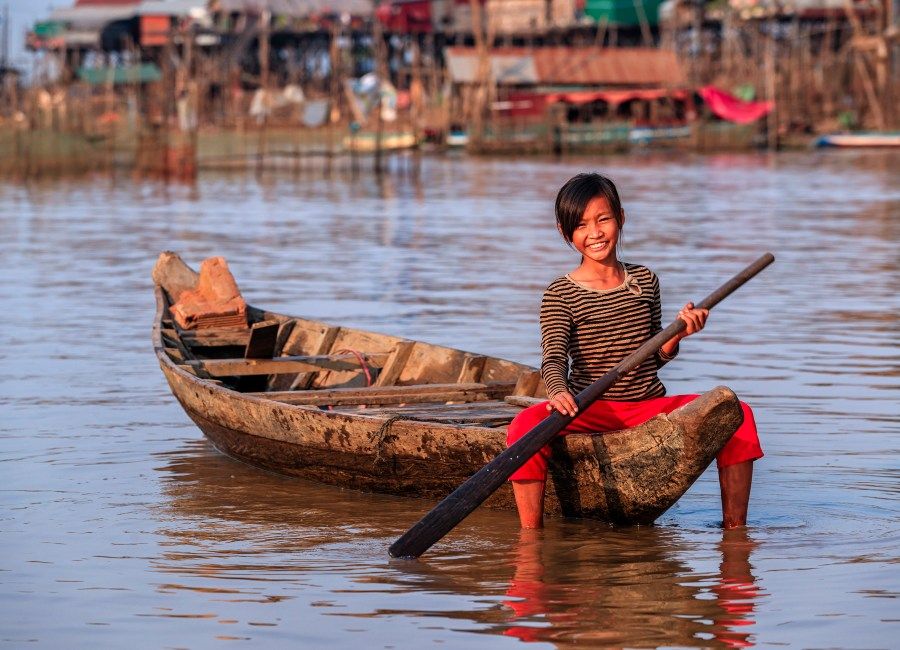
Cambodia’s great lake – Tonle Sap – is the largest freshwater lake in southeast Asia, the most expansive and fertile fishing ground in the world, and a Cambodian national treasure. A privately guided boat tour will introduce you to the communities that live around the margins of the lake, who adapt to the continual variation in water levels by building their homes on floating stilts, some of which are up 20m high. A full day tour of the lake can also take in the Prek Toal bird sanctuary, home to 100 species of bird make their life here, around 15 of which are endangered, and as you pass through you should keep a keen eye out for ibis, milky stork, painted stork, Oriental darter, and spot-billed pelican.
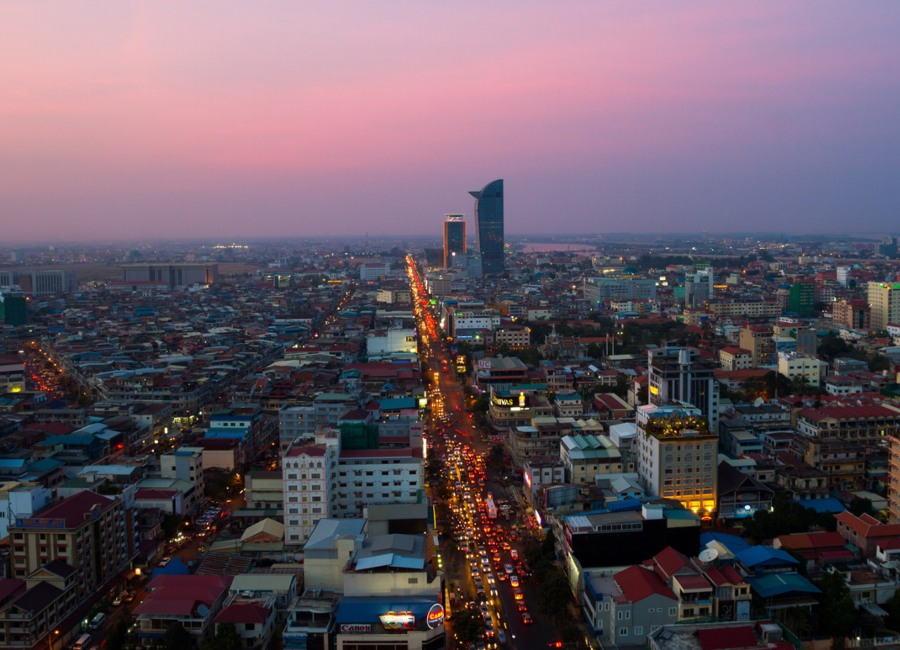
Phnom Penh is one of Asia’s most dynamic and vibrant capitals, and it certainly has a food scene to match. We can arrange an evening dining tour showing the best that the city has to offer. Start a rooftop bar for a sundowner accompanied by epic views. You’ll then be whisked away by ‘remork’ (as tuk-tuks are known in Cambodia) to a hidden back alley restaurant, where you’ll whet your appetite on local Cambodian-style tapas. Next stop is main course at another fantastic hidden gem, well known by locals and expatriates but far from the tourist trail, where you will feast on Cambodian barbeque and locally-brewed beer. End the evening with coffee and desert in the heart of Phnom Penh’s lively riverfront nightlife area. From here you can either be taken back to the hotel for a well-earned rest, or – armed with suggestions from your guide – continue the night independently.
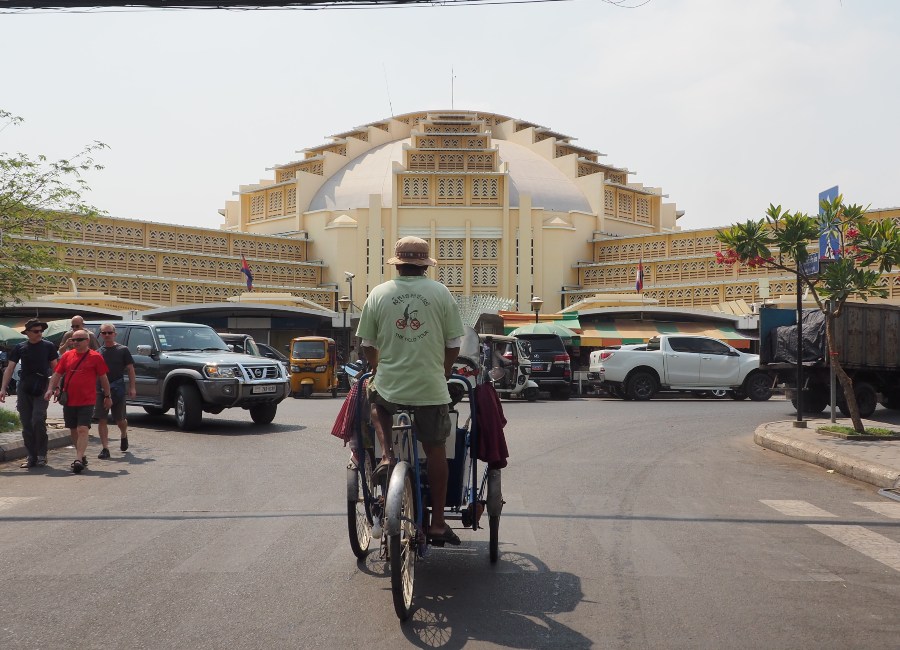
The Cambodian capital has quite the backstory, and one of the best ways to absorb the city is through its architecture, which acts as a lens through which to observe its many comings and goings down the years. n the company of a local architectural enthusiast you’ll travel by cyclo (pedal rickshaw), weaving through the busy city streets, taking in Chinese-style shophouses in older residential areas, French colonial buildings from the late 19th and early 20th century, and several examples of the famed ‘New Khmer Architecture’ of the 1950s and 1960s. The tour culminates at the Central Market, an astonishing Art Deco landmark, which impresses both as a design classic and as a hive of commercial activity, housing hundreds of stalls selling clothing, souvenirs, electronic goods, jewellery, flowers, and an extensive produce and street food section.
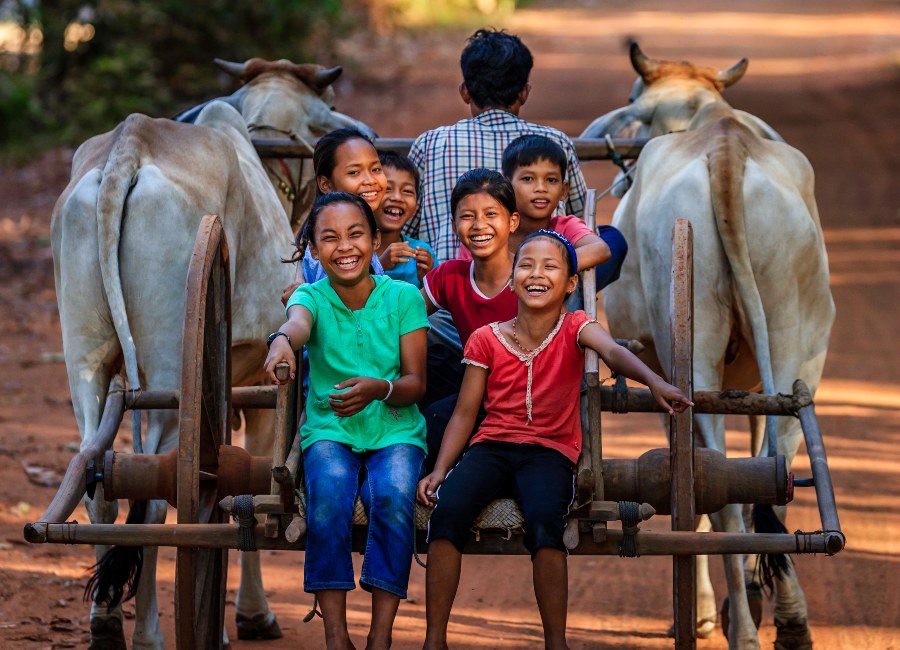
Indulge your sense of adventure with an invigorating and entirely authentic cycling tour of the Cambodian countryside around Battambang. On this thoughtfully-curated tour you’ll experience the experience, ingenuity, and natural beauty that is rural Cambodia. In the company of an experienced local guide you’ll bike along mostly flat paths which are shading by banana palms and orchards, stopping occasionally to visit local families where you’ll learn about traditional methods of agriculture and food production. These tours can be adapted to either a half-day or more challenging and adventurous full-day, dependent on your interest.
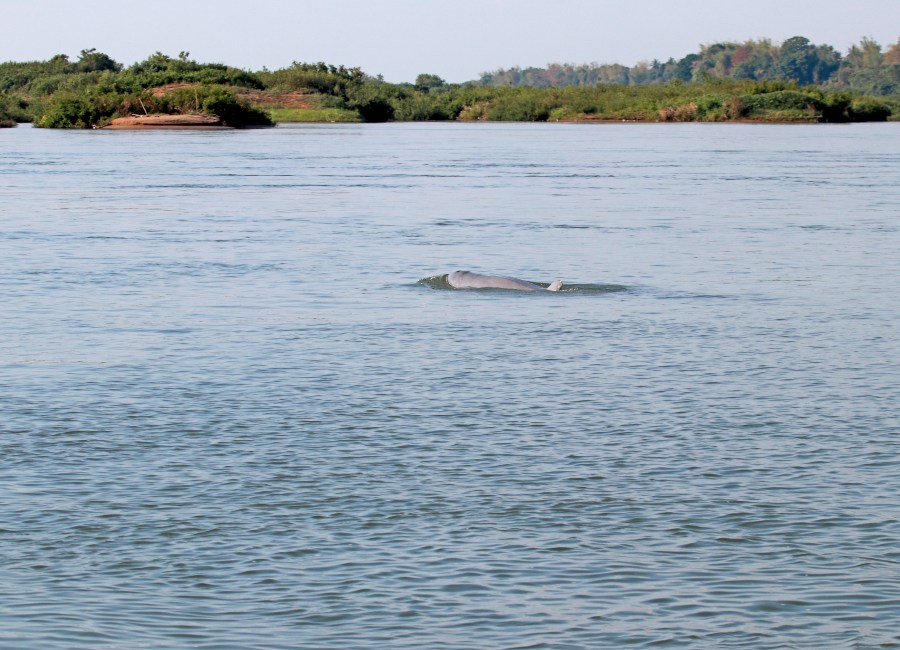
Irrawaddy Dolphins are found in two of Asia’s great rivers: the Irrawaddy (as the name suggests) in upper Myanmar, and also here in the Mekong as it passes through northern Cambodia. Starting from a base in Kratie, a rural city around 5 hours north of Phnom Penh, you’ll join a private local guide to paddle out into the river and spot these curious creatures. Along the way your guide will take you through a sunken forest, around numerous sandy islets, and down a patch of minor rapids. Finish up in time to see the sun set over the placid river in this rugged, isolated corner of northern Cambodia.
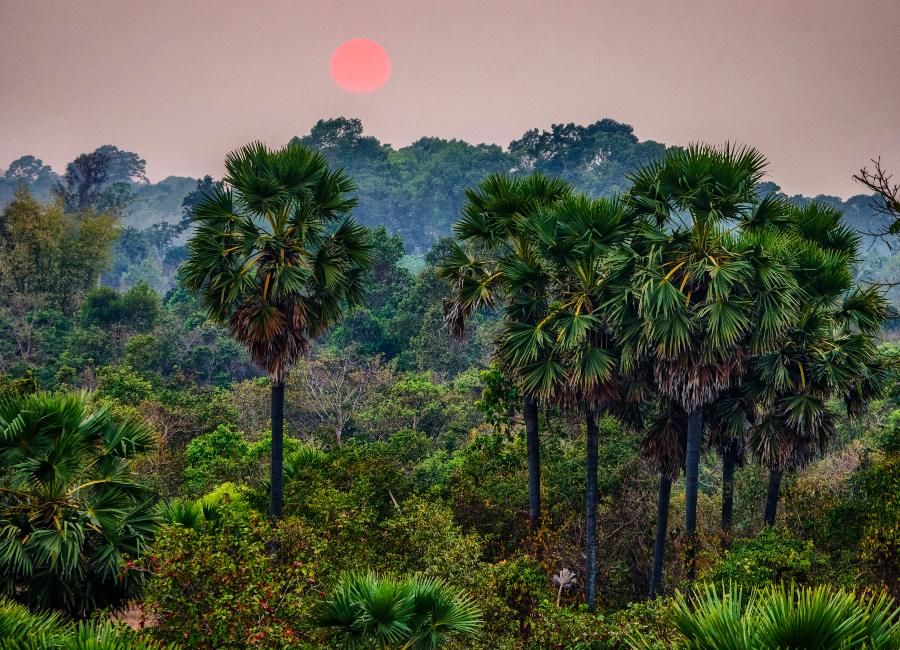
Cambodia’s south becomes progressively more tropical as you head towards the coast. In the far southwest of the country you’ll find the flooded mangroves of Tatai, the rugged and isolated Cardamom mountains, and the jungly interior Bokor and Kirirom National Parks. Each of these locations has much adventure on offer, and – enticingly – excellent jungle lodge accommodation from which to base your exploration. If you’re keen to get out into wild Cambodia, getting up close with it’s beautiful nature and endangered wildlife, talk to our specialists on how one or more of these locations can be added in to your tour.
Cambodia is a tropical destination and as such sees warm temperatures year-round. Even in the coolest months of December and January the mercury will rarely drop below 25C / 77F in the middle of the day so whatever time you plan to visit, pack some shorts!
Cambodia’s climate can typically be divided into three seasons: cool, hot, and wet. The cool season is the established ‘high’ season, falling between December and March, during which time temperatures are manageable and you’ll see little to no rainfall. From April onwards temperatures climb rapidly, reaching a prohibitively hot 40C / 104F on most days through May. This is broken by intense monsoonal rainfall from June onwards which typically lasts until October.
There’s a little more to it when planning an extended trip to Cambodia however. The wetter time of year need not necessarily be a hindrance for summer holiday travel, and there are also two distinct shoulder seasons which see attractive rates and are excellent times to visit as long as expectations are well managed. A complete season-by-season guide can be found below.
Cambodia is a fascinating destination and has much to offer at any time of year. We’ve put together an overview of climate season-by-season and region-by-region below.
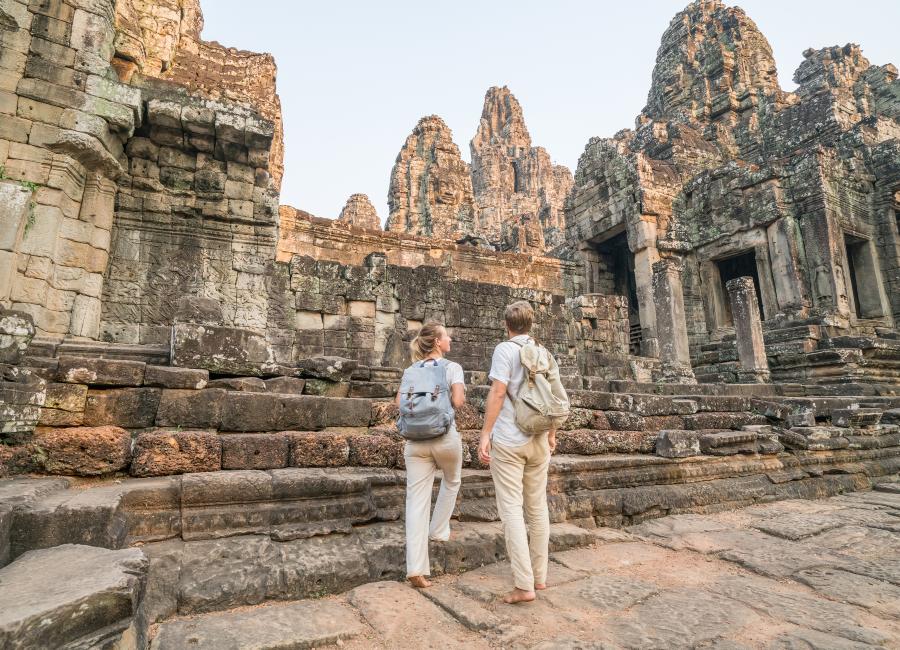
The established best time to visit Cambodia is in the ‘winter’ months from December through to March, with warm-but-not-hot temperatures and very little rainfall. This is a perfect time to travel countrywide, particularly into rural areas where any post-rain patching up of roads and hiking routes will have been completed (before they are decimated once more by the heat and then downpours of the summer). The best weather brings with it the largest crowds, with Angkor Wat very busy throughout the entire high season period, but a carefully managed itinerary will ensure you avoid the worst of the crowds.
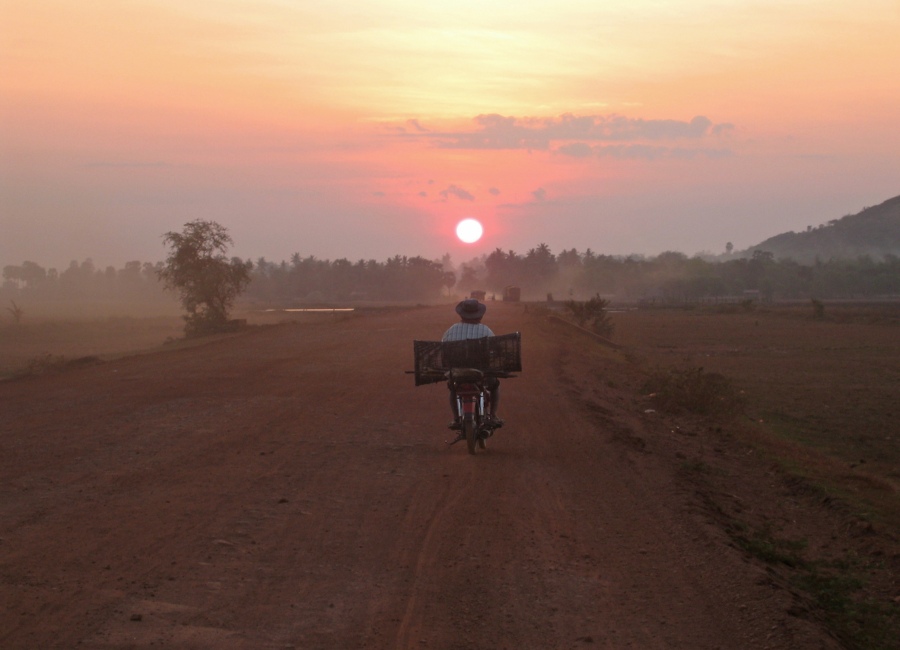
From late April onwards the temperature really begins to climb. The monsoon is still a few weeks off yet, and having seen little rainfall since the previous summer Cambodia is not just dry at this time of year – but parched. Heading into May temperatures regularly reach and exceed 100F, which – combined with the scorched earth and still air – can be just too much for many western travellers. Those who are happy with the heat – this is a particularly popular time of year for Spanish and Italian travellers for instance – can still travel and will enjoy the benefits of travelling out-of-season with lower rates and thinner crowds.
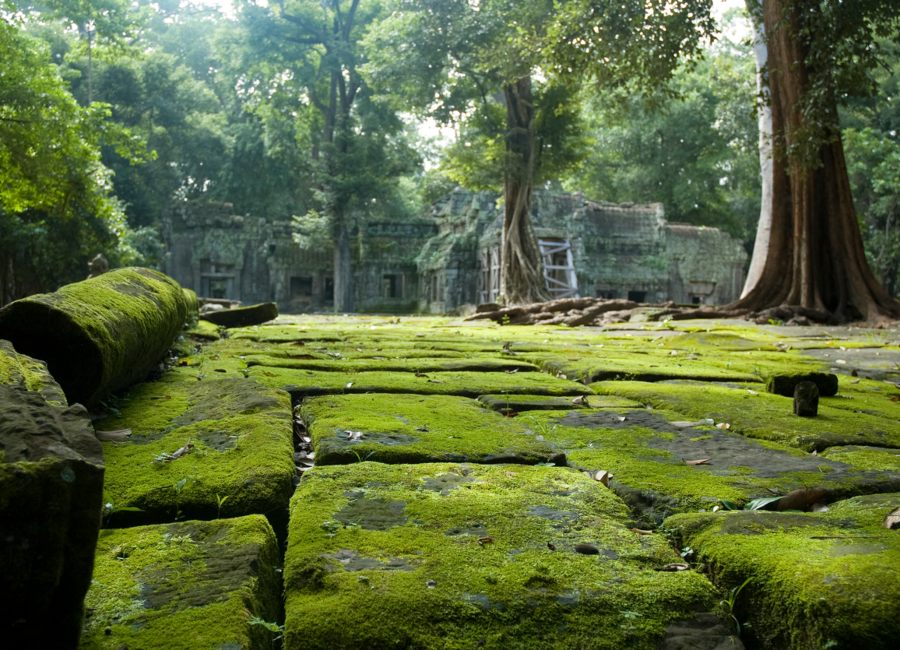
At some point around late May or early June the heat will finally be broken as the southwest monsoon arrives and dumps buckets of rain across the country, seeing temperatures tumble down to much more manageable levels in the process. Although rainfall figures can be daunting – September typically sees 9 inches in Phnom Penh, and 20 rainy days out of 30 – it’s important to remember that when the rain comes it is in short, sharp downpours which generally clear up after an hour so. Cambodia remains a popular destination for school summer holidays, and if travelling in June and early July – within the green season but avoiding school holidays – you’re likely to find tourist spots delightfully empty.
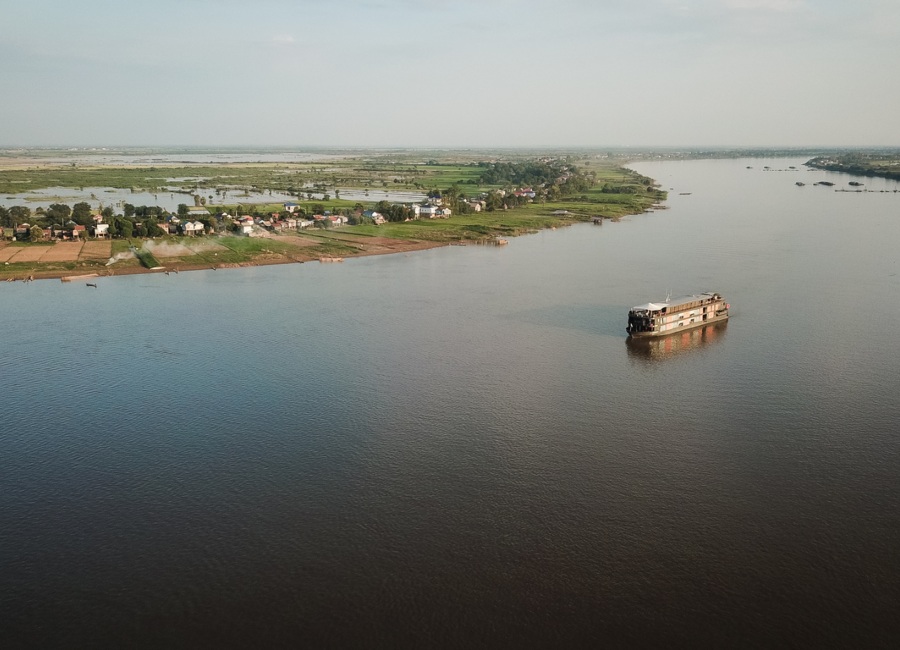
The monsoon rains continue into October but then usually tail off into early November. Occasional sharp showers persist but generally the late autumn months see Cambodia warm, crisp, and fresh. Visitors at this time will find the country carpeted in green and its waterways at their highest; this is an excellent time of year for rural adventures and also marks the beginning of the river cruising season. With high season not kicking in until late November, this can be a great time to visit with excellent rates and much lower tourist numbers around the major sites.
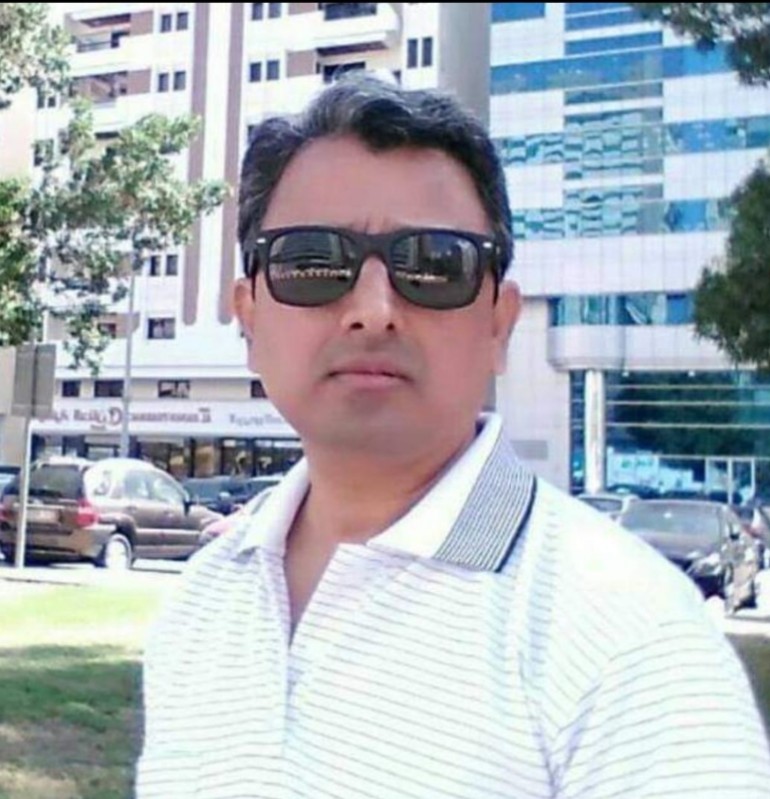
S.Srinivasan
+91 861 077 9636
Talk to our expert for further equiry about tour and destination packages. We are here to help you 24/7 and recommend you budget packages.
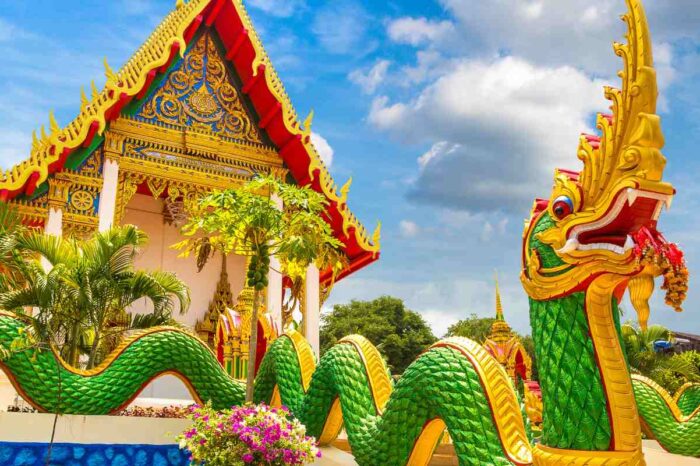
Singapore, Siem Reap, Bangkok, Chiang Mai, Phuket
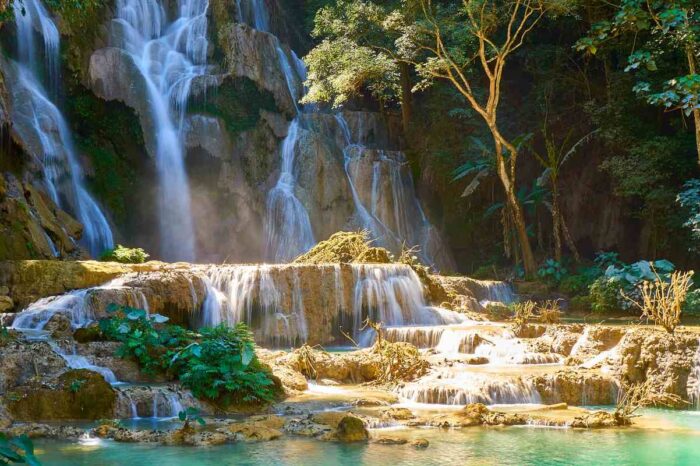
Hanoi, Lan Ha Bay, Hoi An, Hue, Ho Chi Minh City, Phnom Penh, Siem Reap, Luang Prabang
